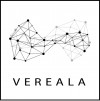The ECHA EU Observatory for Nanomaterials (EUON) released a report, delivered by RPA Europe, on the amount of waste streams containing nanomaterials in the EU.
The Study on the Product Lifecycles, Waste Recycling and the Circular Economy for Nanomaterials built on and expanded a previous OECD work from 2016, and covered a number of topics related to waste: what waste streams contain nanomaterials, the behaviour and fate of nanomaterials in waste processes, the potential exposure of waste management workers, and the best available techniques for emission control. The report also looked at the impact of nanomaterials on recycling, as well as the benefits and challenges relevant to the circular economy.
The report covers both manufactured and incidental nanomaterials, and is based on a literature review complemented by expert interviews. It found that it is not possible to provide a sound evidence-based conclusion about the precise amounts of nanomaterials on the European market and in waste streams, although generic mass flow models have been widely used to provide a general overview of the distribution of specific nanomaterials in the environment.
The study also found that existing research demonstrates that incineration and wastewater treatment are highly efficient at limiting emissions of some of the most commonly used nanomaterials. Substantial progress has also been made in characterising and measuring nanomaterials. Finally, the report found that, while research is ongoing on nano applications supporting the transition to a circular economy model, much of it remains at the academic level, and recommends more work to translate it into concrete solutions.
The full study is available at this link.



















